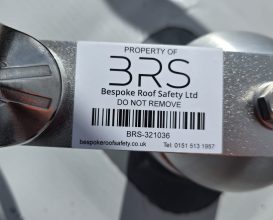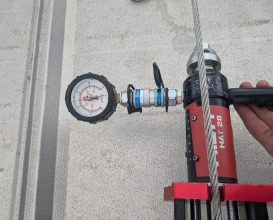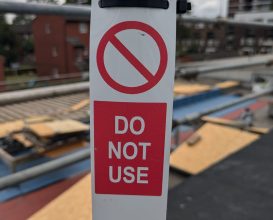Regular Maintenance and Safety Certification of Roof Access Systems in the UK
Roof access systems, such as fixed ladders, safety rails, guardrails, and fall protection systems, are critical for ensuring the safety of personnel working at height. In the UK, strict regulations govern the design, installation, maintenance, and certification of these systems to protect workers from accidents and comply with legal requirements. Regular maintenance and safety certification are essential to ensure these systems remain effective and compliant.
Legal Requirements for Roof Access Systems in the UK
The key legislation governing roof access systems in the UK includes:
- The Work at Height Regulations 2005 (WAHR): This regulation requires employers to prevent falls from height by using appropriate safety systems. Any equipment used for working at height, such as roof access systems, must be inspected regularly.
- Provision and Use of Work Equipment Regulations 1998 (PUWER): This mandates that all work equipment, including roof access systems, is safe for use, maintained in good condition, and inspected regularly to identify potential risks.
- The Health and Safety at Work Act 1974: Employers are required to ensure the health, safety, and welfare of their employees, which includes providing safe access to roofs and other areas at height.
Regular Maintenance of Roof Access Systems
Roof access systems need ongoing maintenance to remain effective and comply with UK regulations. Regular maintenance checks should include:
- Visual Inspections: Look for visible signs of damage, wear, or corrosion on ladders, guardrails, walkways, and anchor points. Rust or corrosion can weaken the structural integrity of the system, increasing the risk of failure.
- Mechanical Checks: Moving parts, such as ladder fixings, hinges, and gates, should be checked for smooth operation and tightened if necessary. Any components showing wear or damage should be repaired or replaced immediately.
- Cleaning and Lubrication: Regular cleaning can prevent debris buildup, while lubrication ensures smooth movement of parts, reducing wear.
- Fall Protection Systems: Inspect harnesses, anchor points, lanyards, and lifelines for signs of wear or damage. Any fall protection equipment should be replaced if it shows signs of deterioration.
It’s crucial to maintain a detailed log of all maintenance checks and any repairs carried out to demonstrate compliance with legal requirements.
Frequency of Maintenance Inspections
The Work at Height Regulations 2005 requires roof access systems to be inspected:
- At regular intervals: Typically every 6 to 12 months, depending on the system and its exposure to the elements.
- After significant weather events: High winds, heavy snow, or storms can damage roof access systems, so inspections are necessary after such events.
- After repairs or modifications: Any changes to the roof access system require a full inspection to ensure its safety and compliance.
Safety Certification of Roof Access Systems
To comply with UK regulations, roof access systems must undergo regular safety certifications by a qualified professional. This certification process involves:
- Initial Certification: After installation, the roof access system must be inspected by a qualified professional to ensure it meets all regulatory standards. This initial inspection includes checking the design, materials, and installation quality.
- Annual Recertification: Roof access systems must be inspected and recertified at least once a year. This involves a thorough inspection to ensure the system remains in safe working order and complies with all relevant safety standards.
- Load Testing: In some cases, roof access systems such as fixed guardrails, anchor points, and fall arrest systems must undergo load testing to ensure they can support the required weight safely. Load tests should be conducted as part of the certification process and may be required more frequently for heavily used systems.
Once certified, a certificate of conformity will be issued, confirming that the roof access system complies with the necessary safety regulations. Maintaining up-to-date certification is not only a legal requirement but also a best practice to ensure the safety of workers.
Benefits of Regular Maintenance and Certification
- Compliance with Regulations: Regular maintenance and certification ensure that your roof access system complies with the Work at Height Regulations 2005 and other relevant laws, helping avoid legal penalties.
- Improved Safety: By identifying and addressing issues early, you reduce the risk of accidents and injuries, ensuring the safety of personnel working at height.
- Longer System Lifespan: Regular maintenance helps extend the life of your roof access system, saving you money on premature replacements.
- Reduced Liability: Keeping roof access systems in top condition reduces the likelihood of incidents that could lead to costly legal claims or insurance liabilities.
Conclusion
Regular maintenance and safety certification of roof access systems are crucial for both legal compliance and the safety of personnel. UK employers are responsible for ensuring that roof access systems are inspected and maintained according to the Work at Height Regulations 2005 and related legislation. By scheduling regular maintenance and obtaining safety certification from qualified professionals, you can ensure a safer working environment and extend the longevity of your roof access systems.
Bespoke Roof Safety offer regular maintenance contracts and certificated testing of all their installations, together with existing installations carried out by others. Every asset that we inspect is assigned a unique identifier and saved to our system to allow timely re-inspection reminders to be sent out – we are happy to conduct inspections of both assets that we have installed, together with assets installed by third parties. For more information on maintaining and certifying your roof access system, or to book an inspection, contact our team of experts today.




